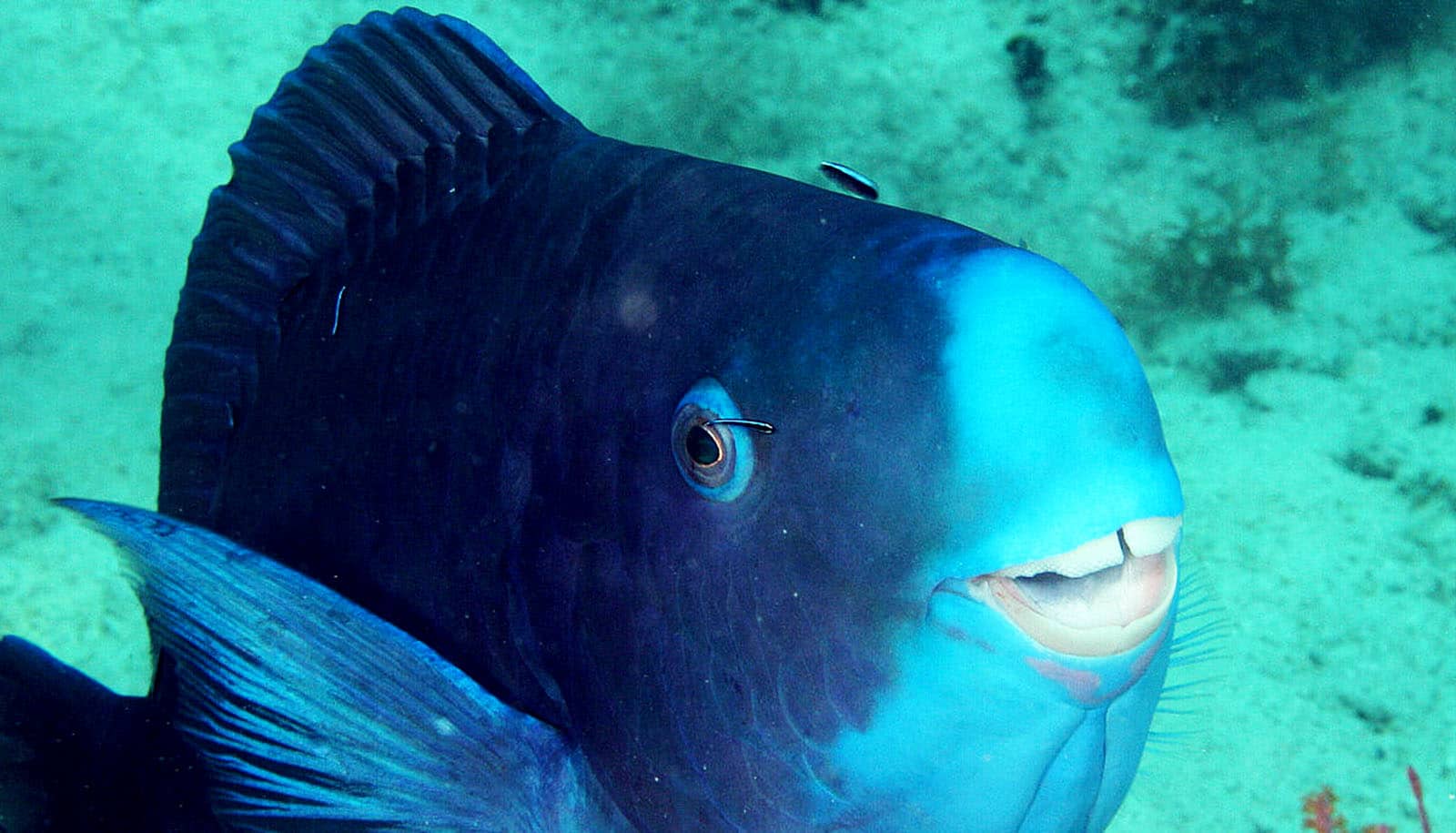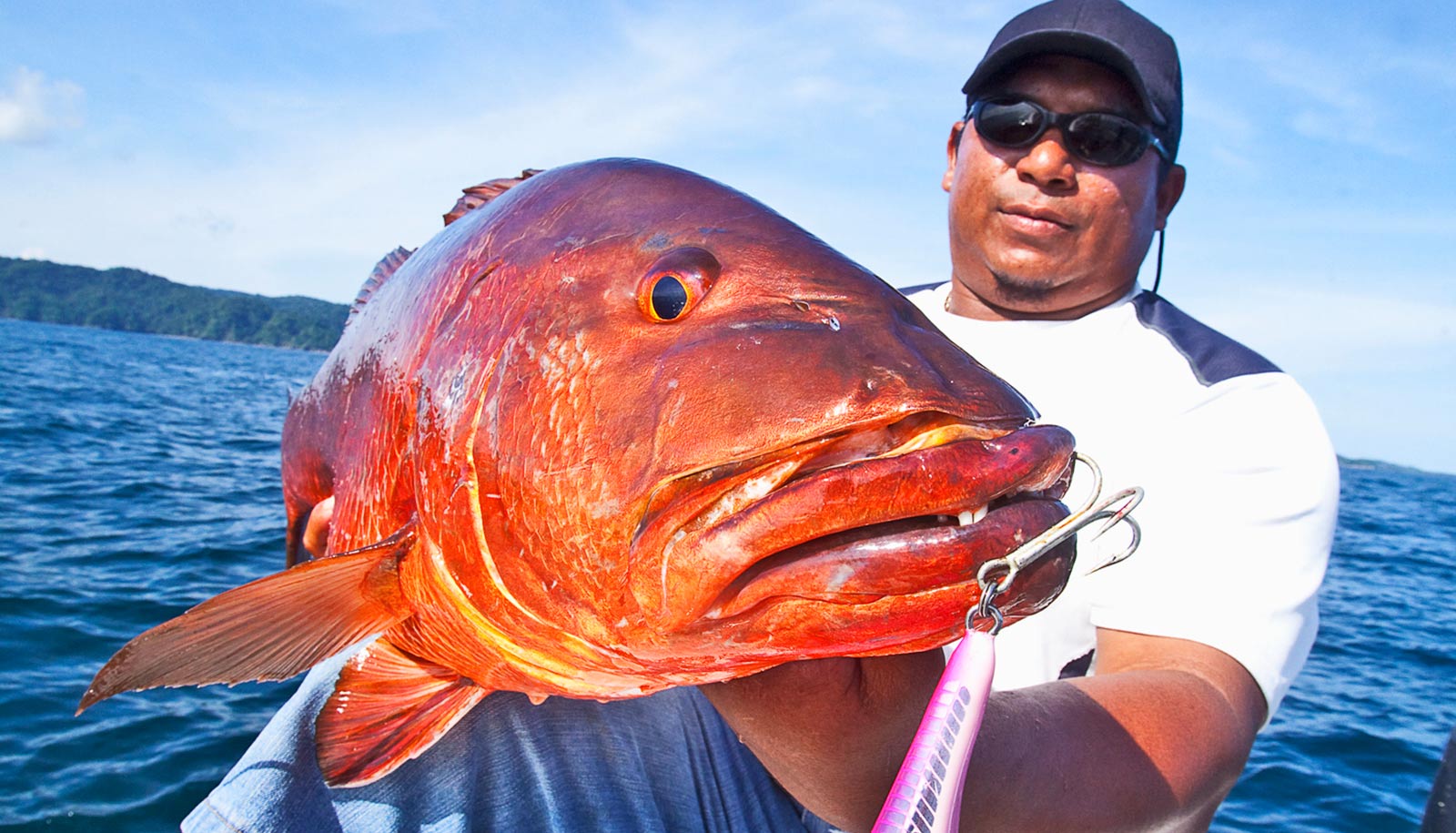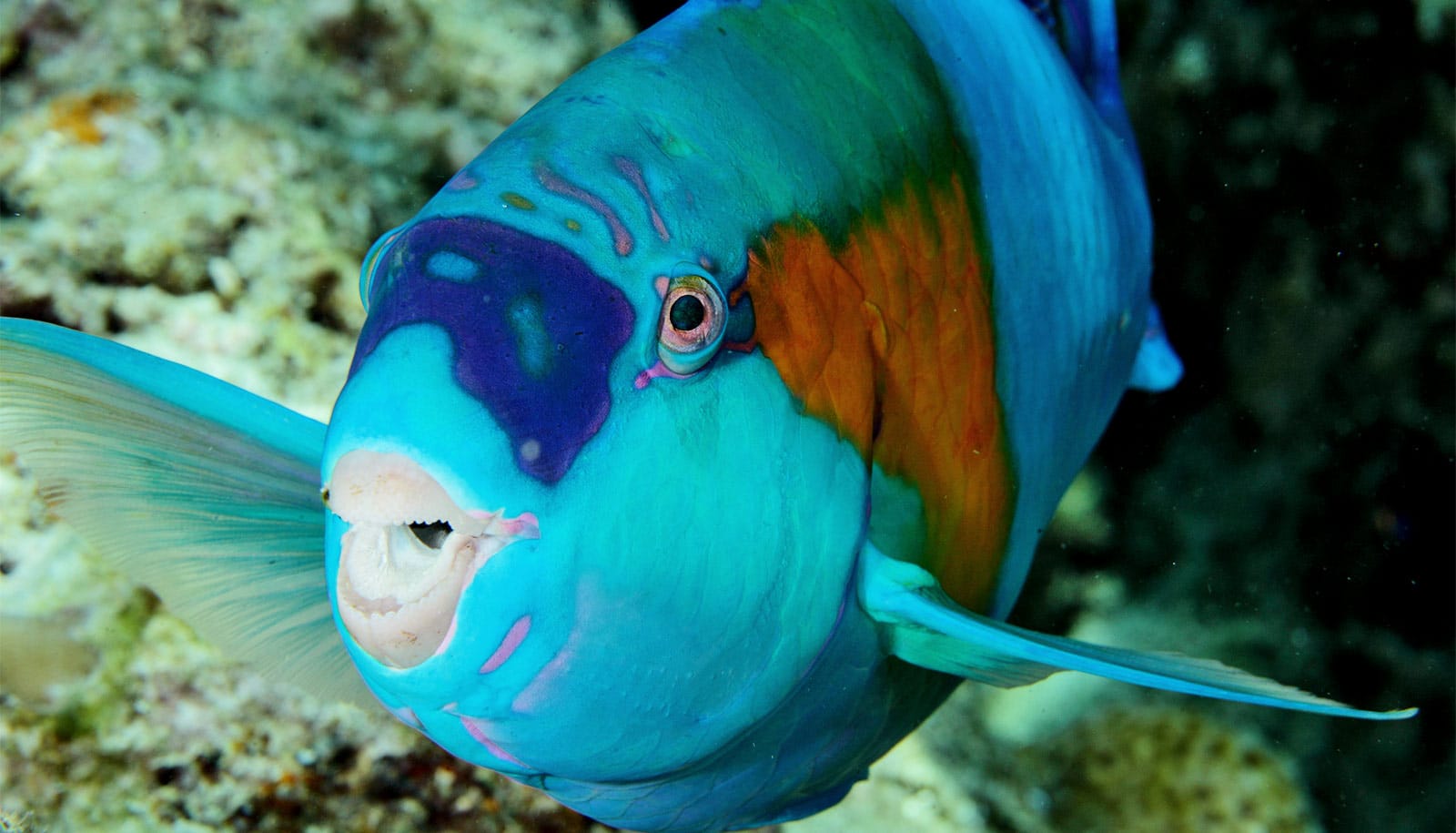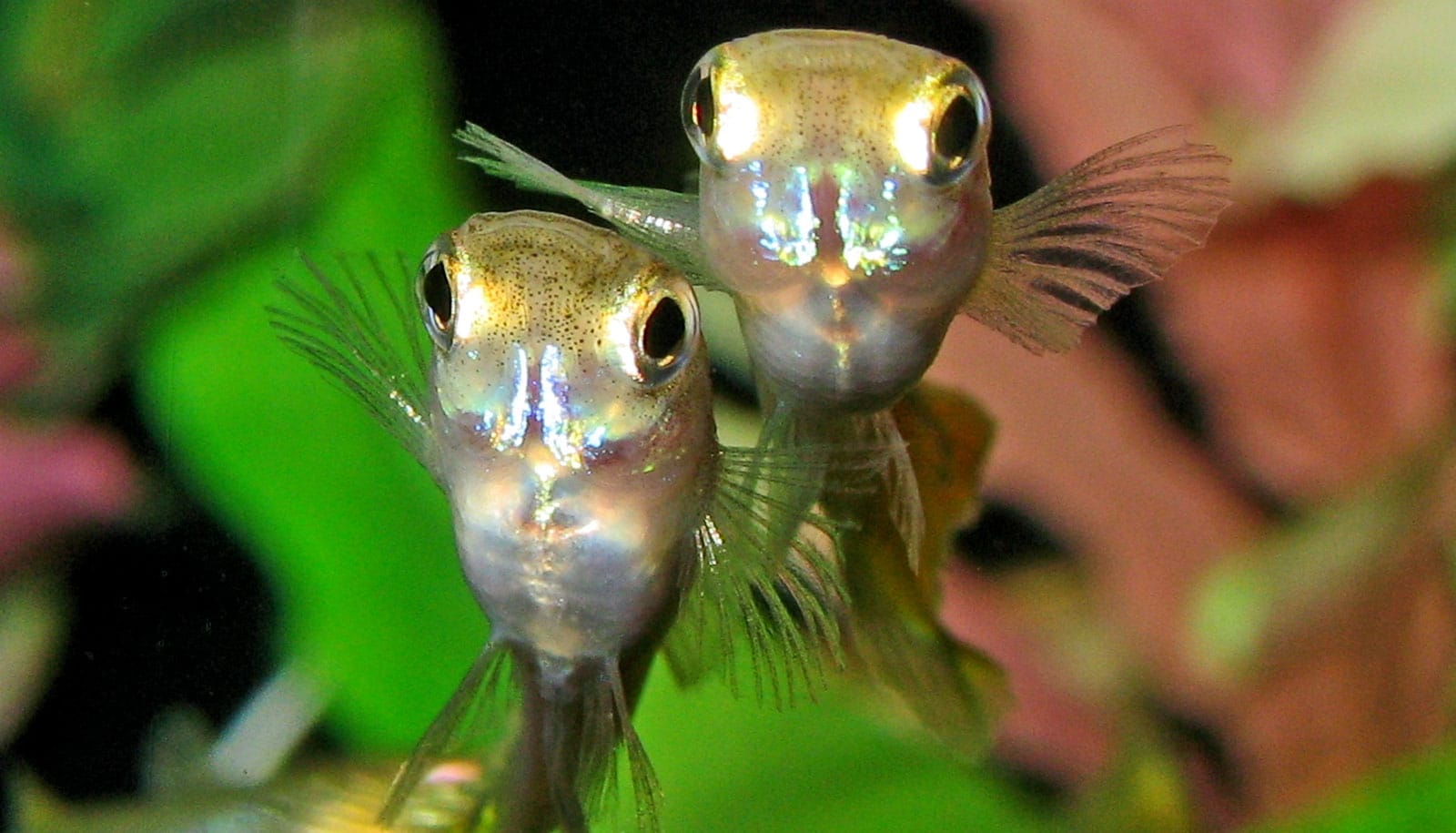Research shows that coral reefs’ diversity of fish results from a relatively recent innovation among bony fish: biting prey from surfaces.
Although jawed fish appear in the fossil record almost 500 million years ago, feeding by grazing, nibbling, or gnawing food off rocks and corals didn’t appear among the teleosts (the group that includes most bony fish) until after the dinosaur-killing mass extinction at the end of the Cretaceous period, about 60 million years ago, according to the new study.
“There may have been some biting done by teleosts before the end-Cretaceous, but our reconstructions suggest that it was very uncommon,” says Katherine Corn, graduate student in the University of California, Davis department of evolution and ecology and Center for Population Biology, and lead author of the paper in the Proceedings of the National Academy of Sciences.
Modern reef fish feed in a variety of ways. Many suck floating food into their mouths by rapidly expanding their heads. This suction feeding is thought to be ancestral in teleosts. A smaller number are “ram biters,” which catch food by essentially swimming onto it with their mouths open.
Many reef fish, including iconic species such as parrotfish, butterflyfish, and triggerfish, bite their food off hard surfaces. This gives them access to prey such as snails and shellfish, echinoderms, anemones, algae, and other animals and plants that may be quite firmly stuck to the substrate.
Corn and colleagues classified 1,530 living species of reef fish by feeding method, then mapped them onto an evolutionary tree of the teleosts. They also studied the rate of body shape evolution in all of these fish.
They found that at the end of the Cretaceous, nearly all of the fish in these lineages were suction feeders. Today, four in 10 reef species are “benthic biters” that browse on the substrate. The biting species are evolving in body shape at almost twice the rate of suction feeders, they discovered.
What set off these changes? The end of the Cretaceous saw changes in coral reefs, with more complex and branching structures that made grazing more productive. At the same time, teleosts evolved shorter jaws that were better for biting.
“These two changes together really opened up biting as an effective mode for fishes,” Corn says. Biting allowed reef fish to access diverse new prey, promoting the evolution of a wide variety of body shapes, she says.
“So once biting evolved, it was really able to take off, and this may explain the high rates of body shape evolution and diversity of biters that we see,” Corn says.
Additional authors of the paper are from UC Davis and Clemson University. Support for the work came from the National Science Foundation, as well as the American Association of University Women and the Achievement Rewards for College Scientists Foundation.
Source: UC Davis



